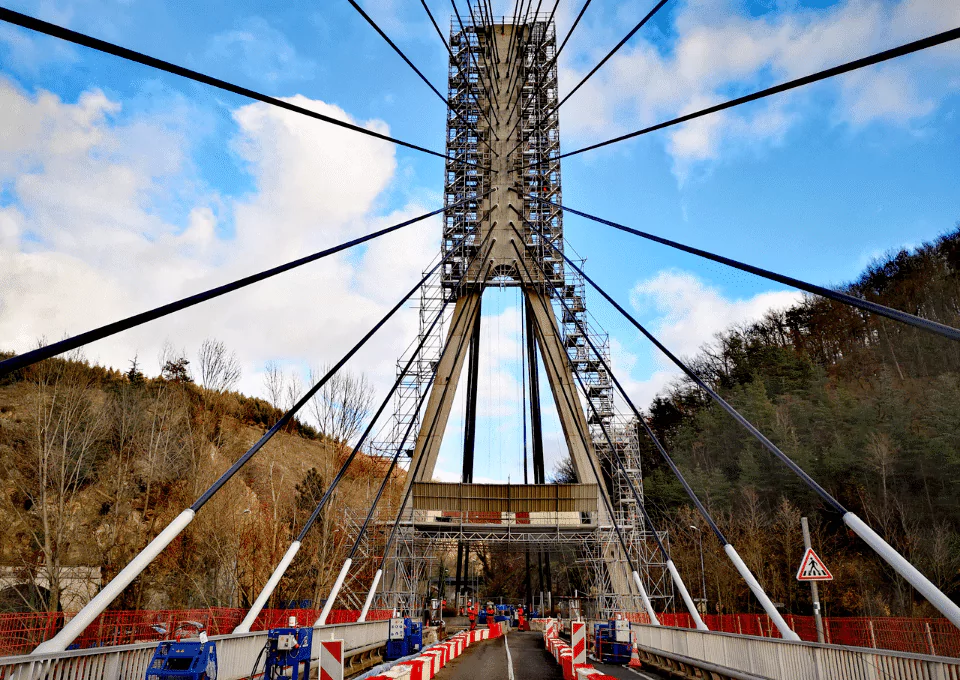It is easy to appreciate that the cables on a cable-stayed bridge or other structure are critical to ensure their effective and safe performance. The cables are particularly exposed to variable loading, climatic events and, more exceptionally, fire, ice and even malicious attack.
Backed by its long experience providing stay-cables for a vast array of new structures, Freyssinet has developed a comprehensive range of technical solutions and services for the maintenance and repair of all types of stay cables and suspension cable systems.
